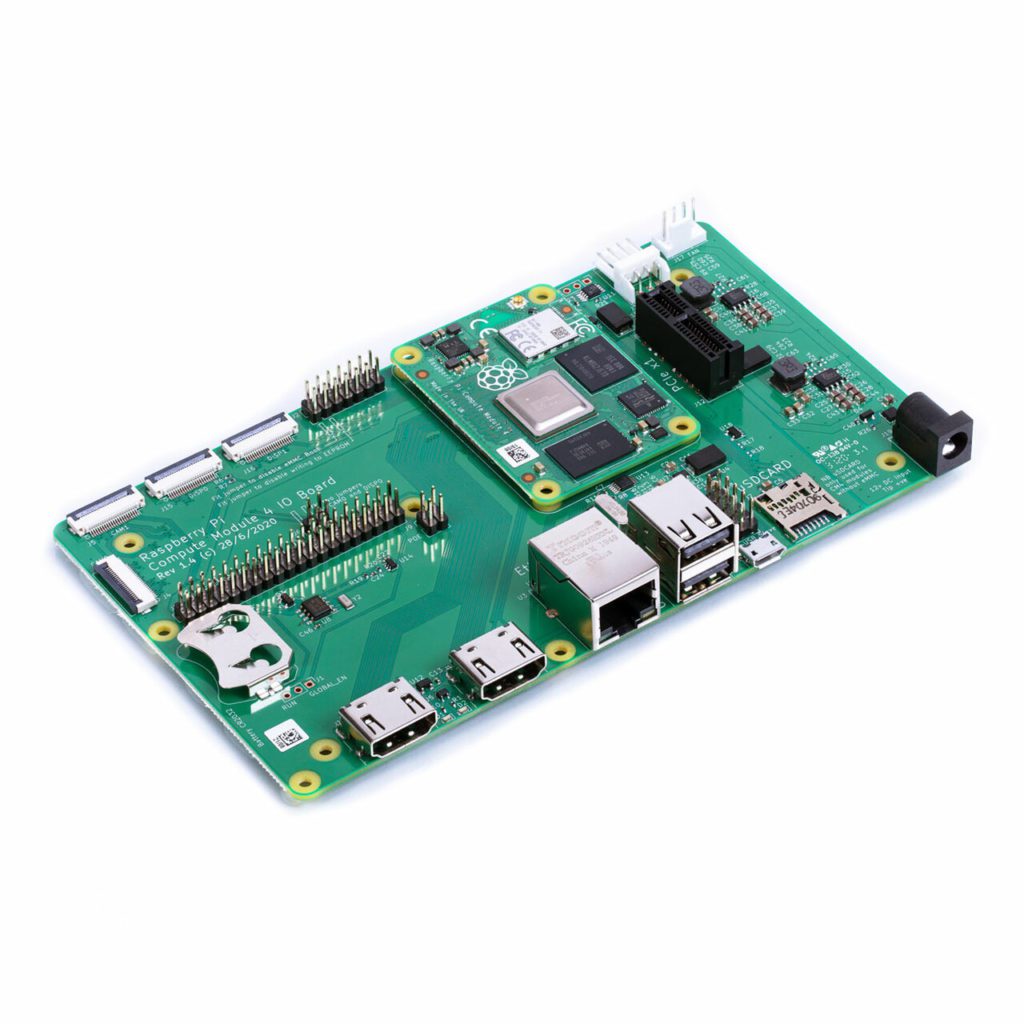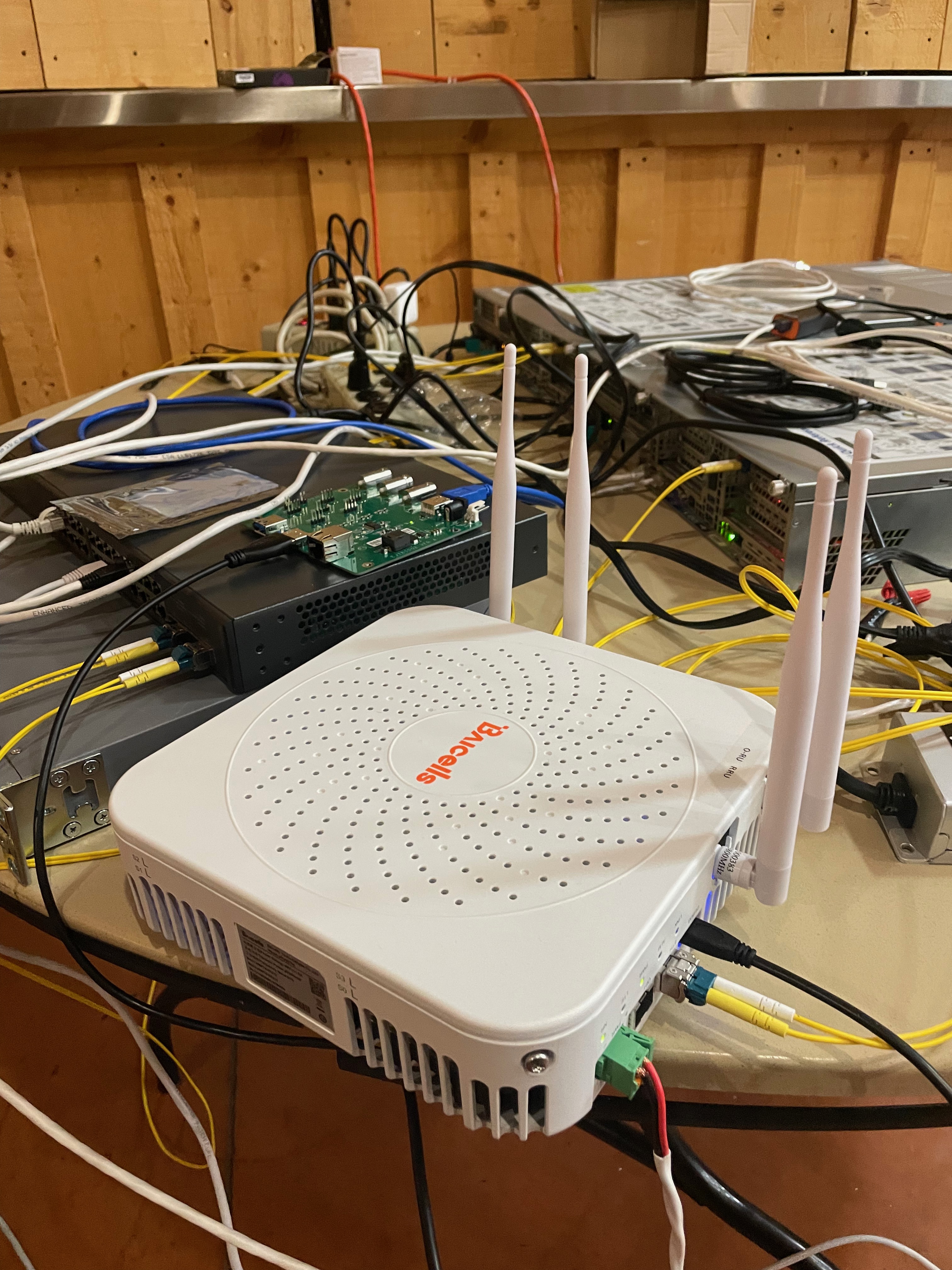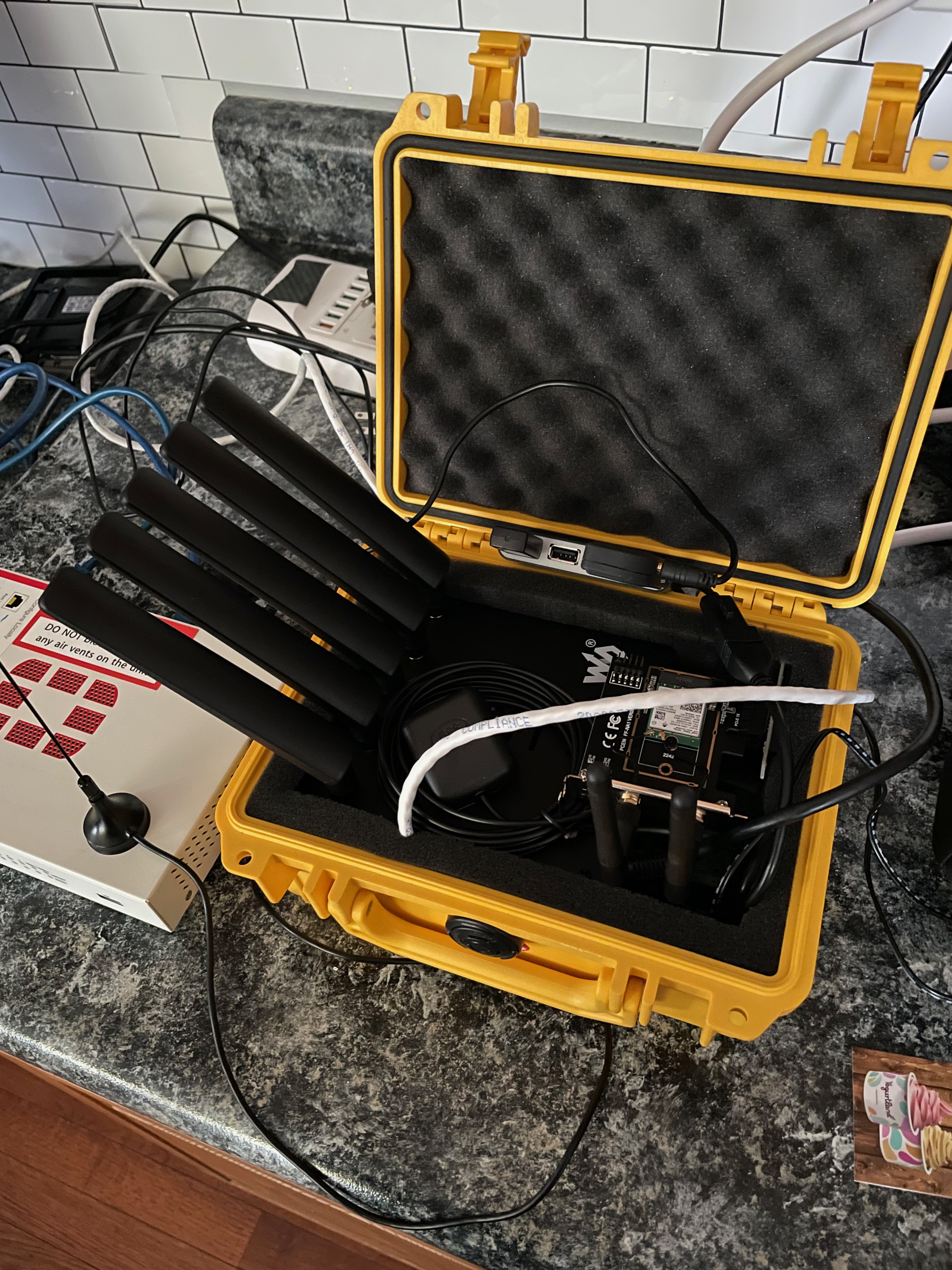Cherry, Blackberry, Raspberry, and Strawberry Pie.. Yum!

Introducing the 5G CBRS Pi with Wifi 6e
As I mentioned in my previous post, in November 2021, I was preparing to give a couple of presentations at a retreat at Bryce Canyon, Utah for a group of K12 educational technologists about Wifi 6e and CBRS and needed a way to show off 6Ghz Wifi Networks. The Wifi community has been building solutions for what I needed. The issue.. it isn’t something you can just purchase off the shelf yet. The project soon morphed to include an additional project I have been working on, adding a 5G CBRS modem to my Raspberry Pi.

The Build
With Wifi 6e being bleeding edge technology, I had to build the tools myself. The WLAN Pi community has solutions that I had read about, but the tools were not going to be released before my conference in January 2022. So I dug into reading anything I could find about how to piece together a Raspberry Pi with Wifi 6e. After my presentation, I discovered additional resources beyond Github and Twitter from the WLAN Pi community. Those resources would have made the project so much easier, but I learned a ton by building it myself from scratch and that lead to my inspiration of adding CBRS to the project. That device ended up being a Raspberry Pi Compute Module 4 with the Waveshare IO Board that has a PCI-E port and the regular Raspberry Pi GPIO ports.

For the last two years, I have been working on about 5 different exploratory projects at the same time including building a CBRS network for K12 schools. I work for a region of nine K12 school districts and three of my school districts are part of a state wide CBRS Pilot. With this project, my original goal had been to learn how Wifi 6e worked, but soon expanded into learning how a CBRS client works with a 5G Pi Hat from Waveshare. As part of our CBRS Pilot, I live within half a mile of one of our schools that has some Baicell 436Q radios broadcasting on the CBRS Band 48, and I have a Ruckus Q710 at my office. So all I needed to do was install one of our SIM cards into the bottom of the 5G Pi Hat and install the driver. The Wifi 6e part took two months of discovery to get the drivers installed correctly; the 5G Pi Hat took a couple hours to get working.

My CBRS Pi runs on the Qualcomm Snapdragon X55 modem supporting the CBRS Band 48 in both LTE and 5G. The M.2 SIM8200EA-M2 Modem has connections for 5 antennas and a GPS antenna. The Intel AX210 Chip is connected using a PCI-E adapter with a riser cable and has two antenna ports. I removed the low profile desktop bracket and ran the U.fl/IPEX MHF4 to SMA Female Pigtail Antenna WiFi Cables to holes I had to drill into the acrylic case and then secured the PCI-E adapter using brass standoffs. The 5G Pi Hat fit as any other regular Pi Hat does on the GPIO ports, and I mounted it to the Pi with 4 brass standoffs.

The 5G Pi Hat connects using USB 3.0 instead of using the GPIO pins, so you have to use a male-to-male USB cable to connect the 5G Pi Hat to the IO Board. The kit comes with different usb adapters for connecting it to a regular Pi or connecting it in this manner. You can also use the USB cable to connect it as a modem directly to a Window computer. Since it doesn’t rely on the GPIO headers, I hope I will be able to stack additional Hats on top. I’m looking at using this to build a CBRS Remote Controlled Car and maybe even a 5G Pi Drone.

The 5G Pi Hat is powered using a Micro USB cable so you need two usb ports. The IO Board only has two built in USB ports with two additional USB headers so a USB hub is needed to connect extra devices. The IO Board can only be powered with with a 12v Power Supply instead of a regular micro-usb or usb-c adapter as other Raspberry Pi models. The CM4, that I purchased, does not have the wireless adapters built in so there is no bluetooth or wifi built into this model. Other models of the CM4 have bluetooth and wifi built in. I also bought the model with built in eMMC instead of requiring an SD Card. This has been a bit of a curse, as I have to re-flash the Pi every time I want to try a different applications instead of just swapping SD Cards.

There are Pi Hats and LTE Modems that are a lot cheaper. The Modem I chose has bleeding edge support for 5G. It’s one of the first 5G modems that I’ve found that supports the CBRS Band 48. You can find LTE Modems for about a third the price. The supported LTE modems that I’ve found are the Telit LM960A18 or Telit LN920A6. There are Pi Hats for mounting these LTE modems via PCI-E or M.2. I chose this specific Pi Hat and modem because I wanted to future proof my device and test with 5G.
At the Tech Retreat, I presented at about Wifi 6e back in January 2022, we had both a LTE CBRS network and demoed a Baicell 5G Core, BBU, and RAN. I used my CBRS Pi with a 5G CBRS SIM and got improved performance over my CBRS Pi with a LTE SIM connected to our LTE CBRS network.

I also realized that I would need a case to protect the CBRS Pi. The 5G Pi Hat came with an acrylic case that was designed for a regular Raspberry Pi, the IO Board extended beyond the edge of the case. It actually worked out well to showcase the Intel AX210 Wifi 6e card with a PCI-E M.2 Network Card Adapter with a Riser Cable and some brass standoffs. I was researching an app called FreqShow to display spectrum with a USB SDR dongle and saw someone using a Pelican Case to house a Raspberry Pi with a Touchscreen. A year and a half ago, I had taken the Ekahau ECSE Troubleshoot course which included a small Pelican Case that was the perfect size to transport my CBRS Pi. To pack up the Pi, I have to remove the antennas and store them on top but the device is well protected by the case.

For my next post, I will break into the OS, Drivers, and Applications I am using. I also will discuss my plans and ideas for using the CBRS Pi in more applications.

